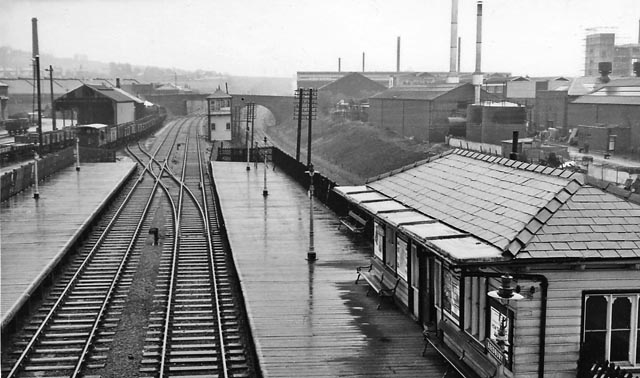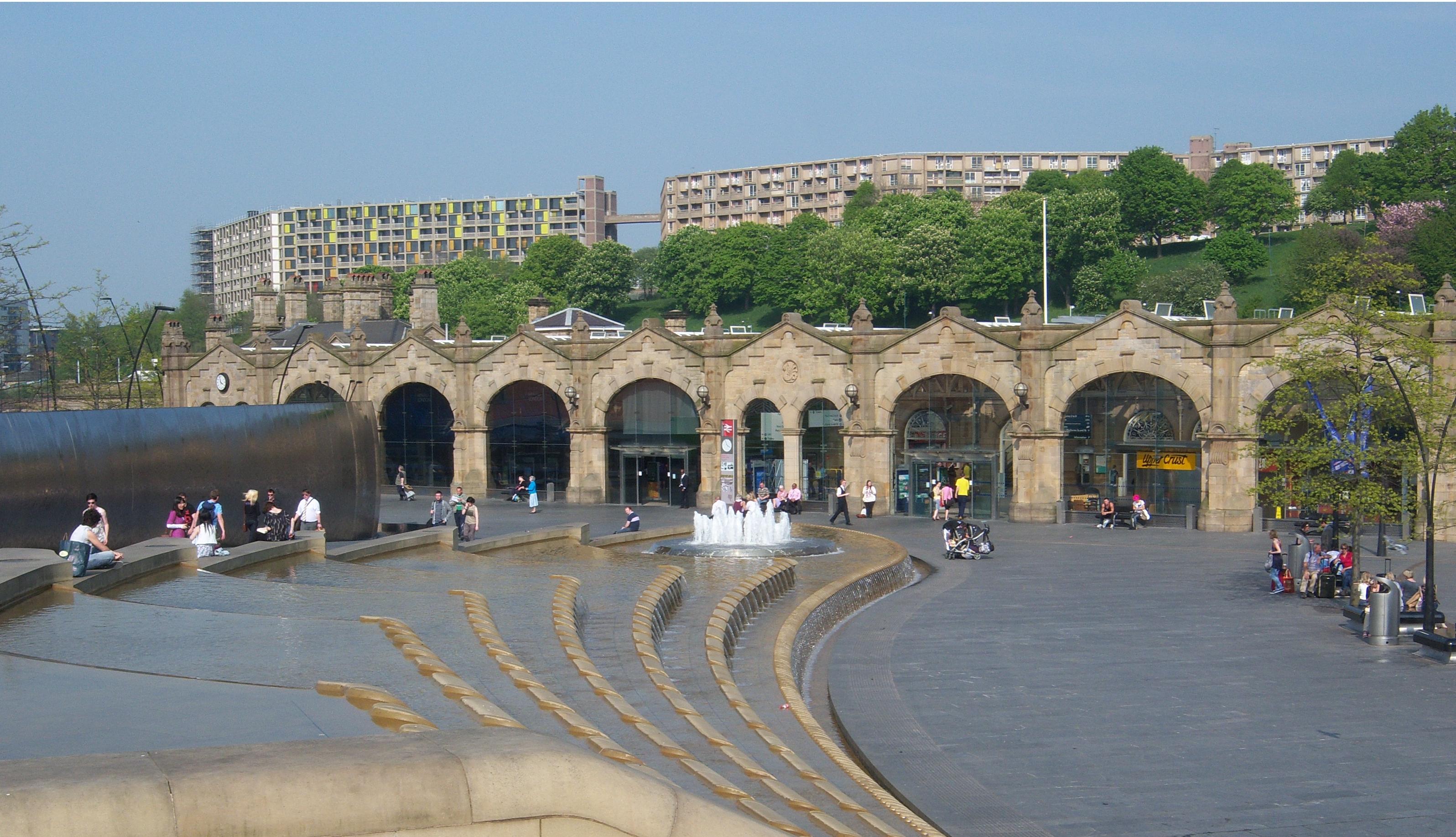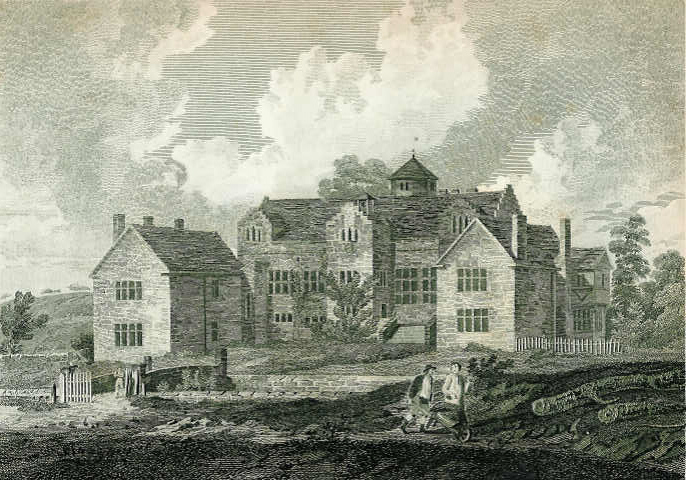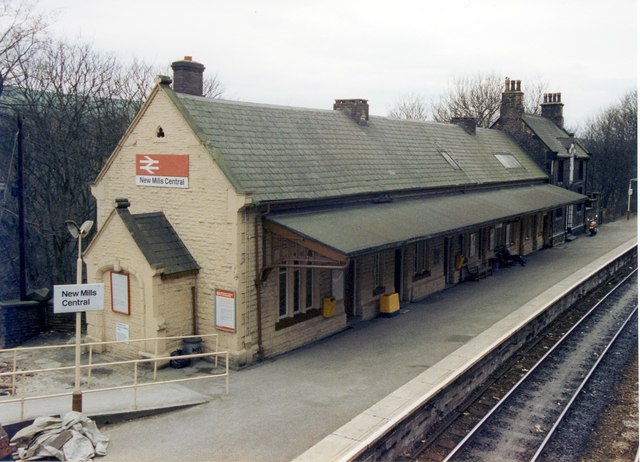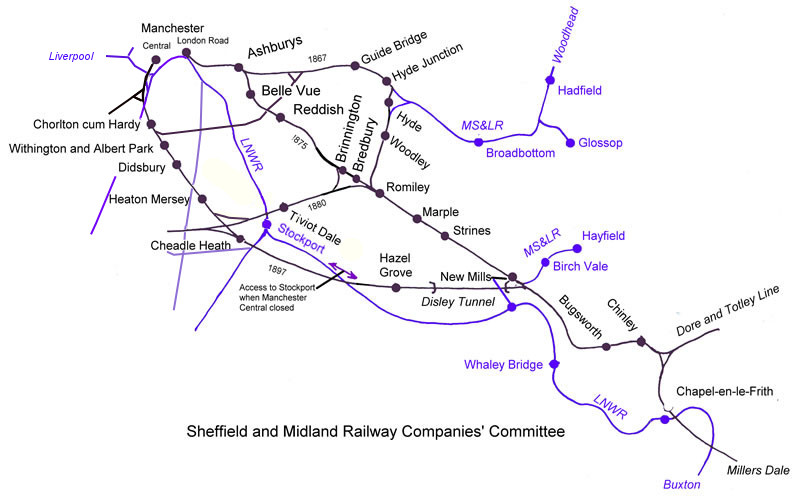|
Bredbury Railway Station
Bredbury railway station serves the town of Bredbury in the Metropolitan Borough of Stockport, Greater Manchester, England. It was built by the Sheffield and Midland Railway Companies' Committee in 1875, on the line between New Mills Central and Manchester London Road (since renamed ''Piccadilly''). The station was modernised in 1976; the buildings on the eastbound side were replaced and the platforms were raised, with the result that the old waiting room on the Manchester side is three steps lower down. The original stationmaster's house survives, as does the 1916 footbridge. Facilities The ticket office on the eastbound side is manned through the day on weekdays (06:20-20:50) and on Saturdays until early afternoon (07:20-14:20). Outside these times, ticket must be bought on the train or prior to travel. Waiting shelters are present on each platform and train running details are offered via automated announcements, digital information screens and timetable posters. No ste ... [...More Info...] [...Related Items...] OR: [Wikipedia] [Google] [Baidu] |
Bredbury
Bredbury is a town in the Metropolitan Borough of Stockport, Greater Manchester, England, south-east of Manchester, east of Stockport and south-west of Hyde. At the 2011 census, it had a population of 16,721. It is on the lower southern slopes of Werneth Low, an outlier of the Peak District between the valleys of the River Tame and River Goyt, head-waters of the River Mersey. History Iron Age The area must have been unattractive to the Brigantes settlers in pre-Roman Britain, with its bleak hilltop, the heavy clay soil of the intermediate land probably covered by trees and becoming marshy where the slopes flattened out, and the swampy valley floors. The rivers flowed more fully before their waters were dammed in the 19th century to supply Manchester, Stockport and other towns. However, where the valley of the River Goyt narrows at New Bridge, passage was possible and here an ancient highway entered the village to proceed along the higher land to the north-east. Roman ... [...More Info...] [...Related Items...] OR: [Wikipedia] [Google] [Baidu] |
Manchester London Road
Manchester Piccadilly is the principal railway station in Manchester, England. Opened as Store Street in 1842, it was renamed Manchester London Road in 1847 and became Manchester Piccadilly in 1960. Located to the south-east of Manchester city centre, it hosts long-distance intercity and cross-country services to national destinations including London, Birmingham, Nottingham, Glasgow, Edinburgh, Cardiff, Bristol, Exeter, Plymouth, Reading, Southampton and Bournemouth; regional services to destinations in Northern England including Liverpool, Leeds, Sheffield, Newcastle and York; and local commuter services around Greater Manchester. It is one of 19 major stations managed by Network Rail. The station has 14 platforms: 12 terminal and two through platforms (numbers 13 and 14). Piccadilly is also a major interchange with the Metrolink light rail system with two tram platforms in its undercroft. Piccadilly is the busiest station in the Manchester station group with over 30milli ... [...More Info...] [...Related Items...] OR: [Wikipedia] [Google] [Baidu] |
Former Great Central And Midland Joint Railway Stations
A former is an object, such as a template, gauge or cutting die, which is used to form something such as a boat's hull. Typically, a former gives shape to a structure that may have complex curvature. A former may become an integral part of the finished structure, as in an aircraft fuselage, or it may be removable, being using in the construction process and then discarded or re-used. Aircraft formers Formers are used in the construction of aircraft fuselage, of which a typical fuselage has a series from the nose to the empennage, typically perpendicular to the longitudinal axis of the aircraft. The primary purpose of formers is to establish the shape of the fuselage and reduce the column length of stringers to prevent instability. Formers are typically attached to longerons, which support the skin of the aircraft. The "former-and-longeron" technique (also called stations and stringers) was adopted from boat construction, and was typical of light aircraft built until the ... [...More Info...] [...Related Items...] OR: [Wikipedia] [Google] [Baidu] |
DfT Category E Stations
The Department for Transport (DfT) is a department of His Majesty's Government responsible for the English transport network and a limited number of transport matters in Scotland, Wales and Northern Ireland that have not been devolved. The department is run by the Secretary of State for Transport, currently (since 25 October 2022) Mark Harper. The expenditure, administration and policy of the Department for Transport are scrutinised by the Transport Committee. History The Ministry of Transport was established by the Ministry of Transport Act 1919 which provided for the transfer to the new ministry of powers and duties of any government department in respect of railways, light railways, tramways, canals and inland waterways, roads, bridges and ferries, and vehicles and traffic thereon, harbours, docks and piers. In September 1919, all the powers of the Road Board, the Ministry of Health, and the Board of Trade in respect of transport, were transferred to the new ministry. ... [...More Info...] [...Related Items...] OR: [Wikipedia] [Google] [Baidu] |
Railway Stations In The Metropolitan Borough Of Stockport
Rail transport (also known as train transport) is a means of transport that transfers passengers and goods on wheeled vehicles running on rails, which are incorporated in tracks. In contrast to road transport, where the vehicles run on a prepared flat surface, rail vehicles (rolling stock) are directionally guided by the tracks on which they run. Tracks usually consist of steel rails, installed on sleepers (ties) set in ballast, on which the rolling stock, usually fitted with metal wheels, moves. Other variations are also possible, such as "slab track", in which the rails are fastened to a concrete foundation resting on a prepared subsurface. Rolling stock in a rail transport system generally encounters lower frictional resistance than rubber-tyred road vehicles, so passenger and freight cars (carriages and wagons) can be coupled into longer trains. The operation is carried out by a railway company, providing transport between train stations or freight customer facilit ... [...More Info...] [...Related Items...] OR: [Wikipedia] [Google] [Baidu] |
Bredbury Railway Station In 1989
Bredbury is a town in the Metropolitan Borough of Stockport, Greater Manchester, England, south-east of Manchester, east of Stockport and south-west of Hyde, Greater Manchester, Hyde. At the 2011 census, it had a population of 16,721. It is on the lower southern slopes of Werneth Low, an outlier of the Peak District between the valleys of the River Tame, Greater Manchester, River Tame and River Goyt, head-waters of the River Mersey. History Iron Age The area must have been unattractive to the Brigantes settlers in pre-Roman Britain, with its bleak hilltop, the heavy clay soil of the intermediate land probably covered by trees and becoming marshy where the slopes flattened out, and the swampy valley floors. The rivers flowed more fully before their waters were dammed in the 19th century to supply Manchester, Stockport and other towns. However, where the valley of the River Goyt narrows at New Bridge, passage was possible and here an ancient highway entered the village to pr ... [...More Info...] [...Related Items...] OR: [Wikipedia] [Google] [Baidu] |
Sheffield Railway Station
Sheffield station, formerly ''Pond Street'' and later ''Sheffield Midland'', is a combined railway station and tram stop in Sheffield, England; it is the busiest station in South Yorkshire. Adjacent is Sheffield station/Sheffield Hallam University Sheffield Supertram stop. In 2017–18, the station was the 43rd-busiest in the UK and the 15th-busiest outside London. History 1870 - 1960 The station was opened in 1870 by the Midland Railway to the designs of the company architect John Holloway Sanders. It was the fifth and last station to be built in Sheffield city centre. The station was built on the 'New Line', which ran between Grimesthorpe Junction, on the former Sheffield and Rotherham Railway, and Tapton Junction, just north of Chesterfield. This line replaced the Midland Railway's previous route, the 'old road', to London, which ran from Sheffield Wicker via Rotherham. The new line and station were built despite some controversy and opposition locally. The Duke of Norf ... [...More Info...] [...Related Items...] OR: [Wikipedia] [Google] [Baidu] |
Bredbury Rail Station1892020 4db8c4e5
Bredbury is a town in the Metropolitan Borough of Stockport, Greater Manchester, England, south-east of Manchester, east of Stockport and south-west of Hyde. At the 2011 census, it had a population of 16,721. It is on the lower southern slopes of Werneth Low, an outlier of the Peak District between the valleys of the River Tame and River Goyt, head-waters of the River Mersey. History Iron Age The area must have been unattractive to the Brigantes settlers in pre-Roman Britain, with its bleak hilltop, the heavy clay soil of the intermediate land probably covered by trees and becoming marshy where the slopes flattened out, and the swampy valley floors. The rivers flowed more fully before their waters were dammed in the 19th century to supply Manchester, Stockport and other towns. However, where the valley of the River Goyt narrows at New Bridge, passage was possible and here an ancient highway entered the village to proceed along the higher land to the north-east. Roman oc ... [...More Info...] [...Related Items...] OR: [Wikipedia] [Google] [Baidu] |
New Mills Central Railway Station
New Mills Central railway station serves the town of New Mills in Derbyshire, England. It is on the Hope Valley Line between Manchester Piccadilly and Sheffield, east of the former. The town is also served by New Mills Newtown station, which is on the Buxton to Stockport and Manchester line. History In the mid-19th century, the Manchester, Buxton, Matlock and Midlands Junction Railway ran as far as Rowsley and was extended by the Midland Railway to Buxton, in its aim to run as far as Manchester. The Manchester, Sheffield & Lincolnshire Railway also wished to extend southwards from its main line through Woodhead Tunnel to Sheffield and had built a branch to Hyde. Meanwhile, the London and North Western Railway had constructed their own line to Buxton from Whaley Bridge, with a station at Newtown, which effectively blocked the other two. An agreement was reached whereby the MS&LR would build their proposed "Marple, New Mills and Hayfield Junction Railway", while the Midlan ... [...More Info...] [...Related Items...] OR: [Wikipedia] [Google] [Baidu] |
Metropolitan Borough Of Stockport
The Metropolitan Borough of Stockport is a metropolitan borough of Greater Manchester in North West England, south-east of central Manchester. As well as the towns of Stockport, Bredbury and Marple, it includes the outlying areas of Hazel Grove, Bramhall, Cheadle, Cheadle Hulme, Gatley, Reddish, Woodley and Romiley. In 2021, it had a population of 294,800. The borough is third-most populous of Greater Manchester. History The borough was created in 1974, under the Local Government Act 1972, from the former area of the County Borough of Stockport and from the administrative county of Cheshire the urban districts of Bredbury and Romiley, Cheadle and Gatley, Hazel Grove and Bramhall and Marple. Stockport became a county borough in 1889 and was enlarged by gaining territory from Lancashire, including Reddish in 1906 and the Four Heatons in 1913. The Marple Urban District of Cheshire, formed in 1894, gained parts of Derbyshire in 1936 including Mellor and Ludworth from Chapel e ... [...More Info...] [...Related Items...] OR: [Wikipedia] [Google] [Baidu] |
Sheffield And Midland Railway Companies' Committee
The Sheffield and Midland Railway Companies' Committee was incorporated by Act of Parliament in 1869 as a joint venture between the Midland Railway and the Manchester, Sheffield and Lincolnshire Railway. Origins For many years the Midland had been wishing to extend its line from London St.Pancras to Manchester, via Derby and the Manchester, Buxton, Matlock and Midlands Junction Railway. It was thwarted by the London and North Western Railway which already had a line from Manchester to London, via Birmingham and had built a branch line to Buxton. Meanwhile, The Great Northern Railway was also averse to more competition in the area, and the MS&LR wished to expand southwards from its main line from Manchester, via Penistone, to Sheffield. The three joined forces in a series of tripartite agreements, which not being sanctioned by Parliament, were of doubtful legality. However James Allport, with some other Midland directors, met some members of the MS&L board while surveying the ... [...More Info...] [...Related Items...] OR: [Wikipedia] [Google] [Baidu] |
